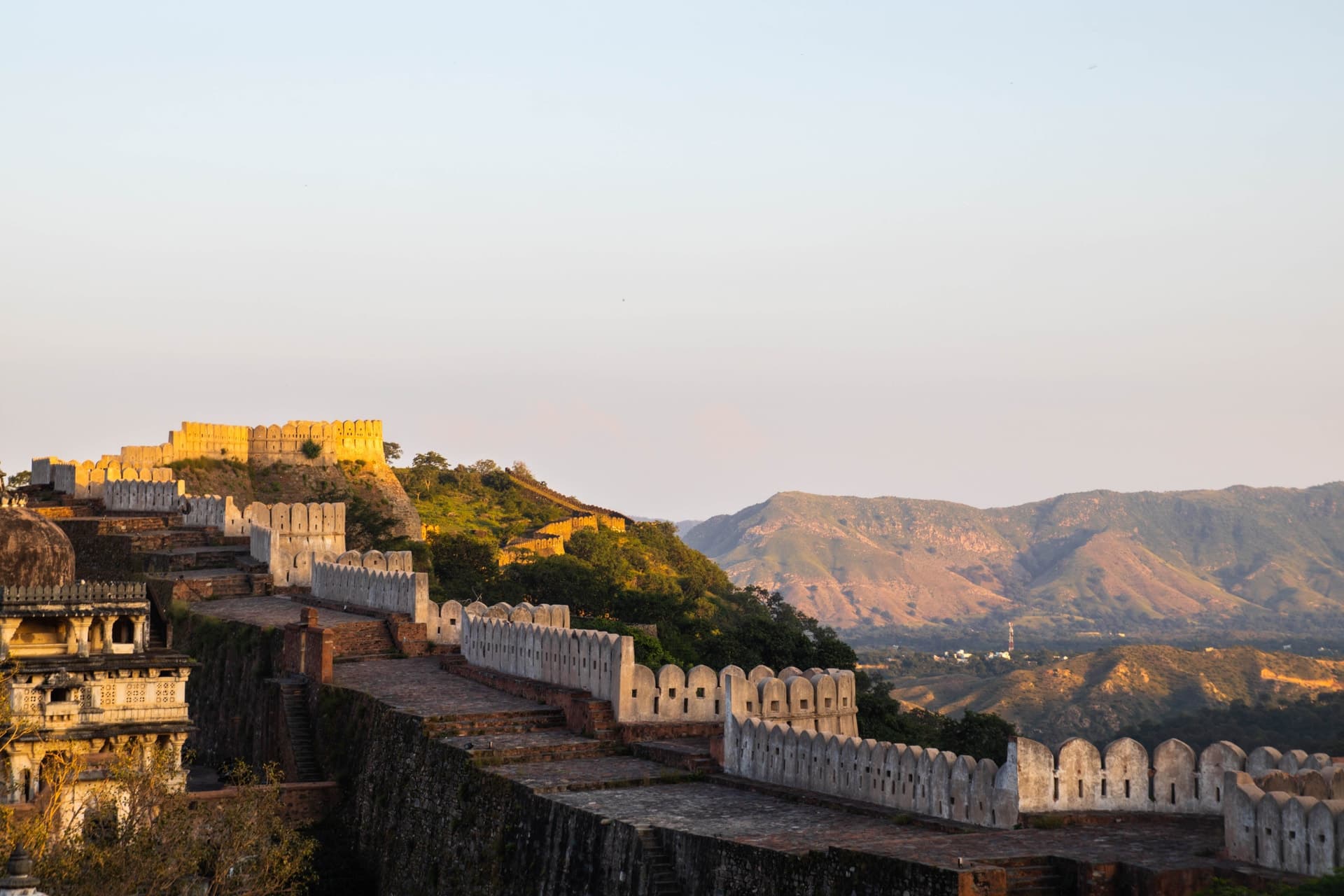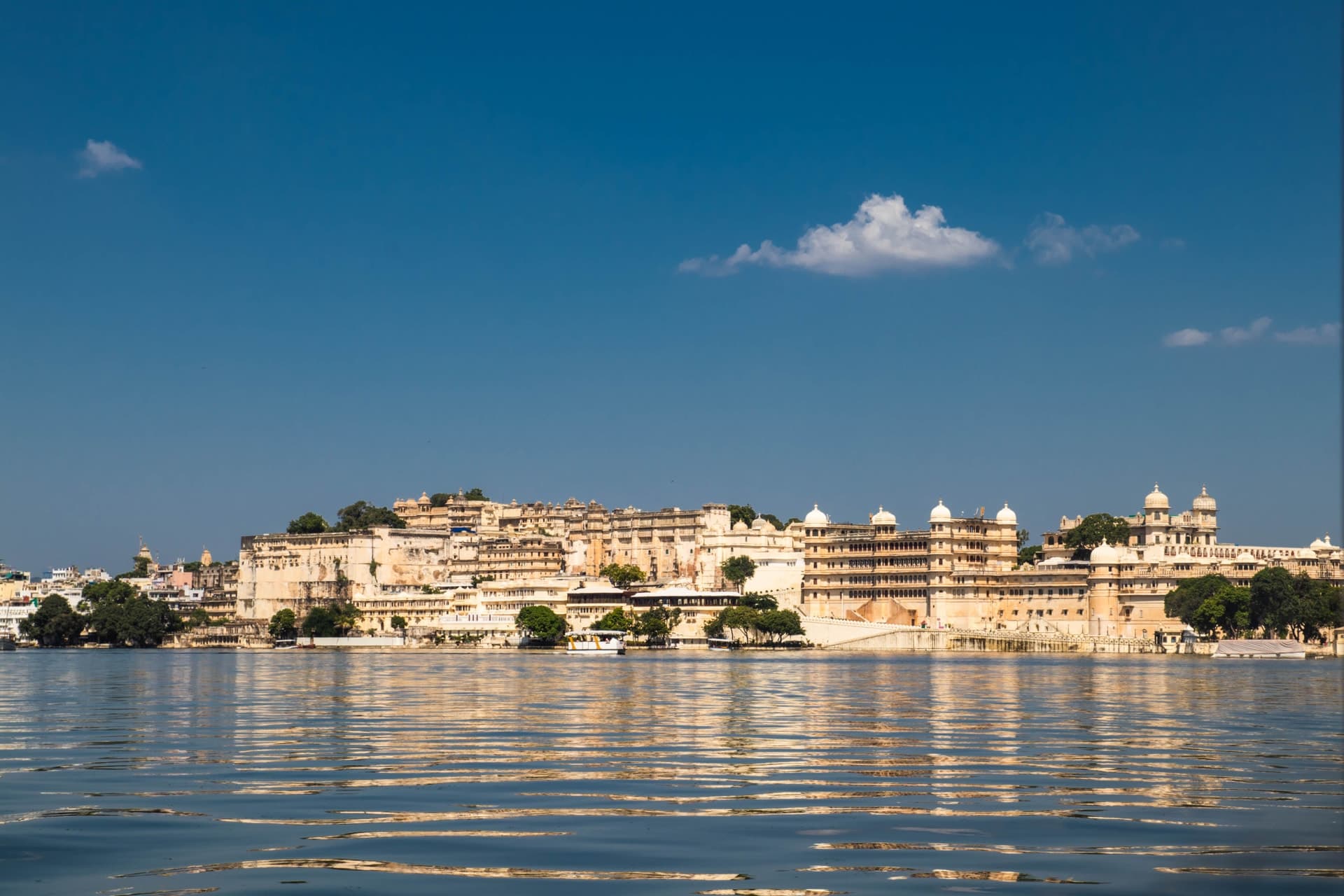There is only one thing that comes to your mind when you hear the words royal, cultural heritage, folk tales, and awesome food- Rajasthan
Rajasthan is famous for its world-famous forts, grand Havelis, temples, and palaces. Most of these forts and Palaces of Rajasthan are already listed in the UNESCO World Heritage Sites because the unbelievable royal masterpieces cannot be found in any other location, which is easily visible in these forts. I always wondered how it would feel to live back in those days, with the large courtyards full of life, and soldiers standing guard at the fort walls.
Part of my Rajasthan trip in 2019, was the grand fort of Kumbhalgarh. And also to enjoy a good break at the Club Mahindra resort :D. I was already roaming around Rajasthan for the past couple of days and the family was arriving at Udaipur from Kolkata. Kumbhalgarh is some 90 km away from Udaipur, in the Aravalli range. We booked a pickup from the resort, but I would have loved to book a rental and drive on the beautiful roads of Rajasthan.
I always wondered how it would feel to live back in those days, with the large courtyards full of life, soldiers standing guard at the fort walls. For this, you need to visit these forts in Rajasthan and you can feel the royal heritage like large courtyards, carved sandstone drills and artworks on the wall, large walls on the hills, corridors and lots of balconies decorated with fountains, triple gateways, golden artwork on the ceiling, royal furniture used by Maharajas and many more.
There is one fort that personifies the spirit and grandeur of Rajasthan more than anyone else, it is the impressive and awe-inspiring Kumbhalgarh fort in Rajsamand district.

Kumbhalgarh Fort is situated in the western part of the Aravali Hills in the Rajasthan. Rana Kumbha founded this fort during the 15th century. Built over a period of 15 years under the expert supervision of the famed architect of Kumbhalgarh Fort Rajasthan named Mandan, it is perfectly perched between eleven peaks of the Aravalli ranges. Maharana Pratap was born in Kumbhalgarh, he was known as the great warrior of Mewar, and the royal families occupied this fort until the 19th century. The world’s second-largest wall surrounds the Kumbhalgarh fort, and this is the second-largest fort in Rajasthan after the Chittorgarh Fort. Kumbhalgarh Fort is famous for its surrounding walls, which extend up to 36km and this is the second-largest wall in the world after the Great China Wall. There are more than 360 temples situated inside this fort including three hundred ancient Jain temples and sixty Hindu temples. You can see the beautiful Aravali Mountains from the fort; the fort has six different gateways.
Its strategic position atop a high ridge camouflaged by the surrounding peaks has made it one of the most important and probably the only impregnable fort of the state. Legend has it that the fort is undefeated and never conquered in battle. It was captured only once by the Mughal army by deceit when they poisoned the water supply of the fort. Later, the fort was taken over by the colonial rulers before it finally came under the aegis of the government of Rajasthan.
Architecture And Layout
Due to its mountainous location, Kumbhalgarh was built in the Rajput military hill architectural style that makes use of the defensive properties of the terrain. The fort is built on a hilltop at a height of about 3600 feet above sea level and enveloped by a 36-km long wall with seven fortified gateways. The wall, which is listed among the longest walls in the world, is often called the Great Wall of India.
The frontal walls of the fort have a thickness of 15 feet. There are more than 360 temples inside the fort, out of which 300 are ancient Jain temples and the others are Hindu shrines. Though several additions were made to the fort by the rulers of Mewar over the years, the original structure exists even now.

The sturdy rounded bastions catch your eye even before you enter the mighty Kumbhalgarh fort, towering loftily above. The well-thought-of architectural features of the fort have made it an invincible stronghold of Rajput supremacy. There are seven imposing gates called Pols, guarding all possible entries to the Kumbhalgarh fort. You can hear the whispers of history as you walk the magnificent ramparts of the fort, purportedly wide enough for 8 horses to march abreast! The Kumbhalgarh fort wall is India’s very own Great Wall, being the second longest wall in the world spanning a length of 36 kilometers around the periphery of the fort with width ranging from 15-25 feet at different places.
All along the formidable wall are tapered openings that allowed archers to aim at enemy armies, while themselves being shielded from their counter-attack. The ramp inside the fort leading up to the top of the hill has many sharp turns, made intentionally to make it difficult for enemy army elephants and horses to proceed fast. There are also clever traps built at many places to take the enemy by surprise. In addition to that, this impressive fort takes everyone by surprise when it comes to the Kumbhalgarh Fort height which stands tall at an elevation of 1100 meters on the Aravalli range.

Best Time To Visit The Fort
The winter months from November to February are perfect. The rainy season (July-August) is also a great time when the entire landscape is magically green and the weather is pleasant.
Kumbhalgarh is without a doubt one of the hotter regions of India, so the best season to visit it would be monsoon or winter. Though surrounded by barren rocky mountains, the breeze is strong and cool, but when it gets hot, it really does feel hot!!!
How To Reach Kumbhalgarh Fort
The nearest railway station and Airport are at Udaipur, which is 84 km from Kumbhalgarh fort. Udaipur is a major city well-connected with all metros via rail and air. Kumbhalgarh fort is a comfortable 2-hour ride from Udaipur via road. The drive to Kumbhalgarh is through the heartland of the Rajsamand district. The highway is super flat, super curvy, and very engaging to drive on. The interior roads are beautiful but quite narrow, this takes up some considerable time. Once you cut off from the main highway (Udaipur-Jodhpur), the roads are through small villages and the countryside. Do grab local snacks (Kachoris) and tea at any village.
It is advised to have an overnight stay at Kumbhalgarh so that you can explore the fort in all its glory.
You can also add some nearby places from Kumbhalgarh -
A day trip to the Ranakpur Jain temples is highly recommended. The exquisite carvings adorning the temples will leave you spellbound.
History enthusiasts can also visit Haldighati, the famed battleground of the clash between Mughal emperor Akbar and Maharana Pratap.
Kumbhalgarh Wildlife Sanctuary - The fort is inside a wildlife sanctuary and there are some safaris options. One can explore the surrounding hills and forests of Kumbhalgarh
Kumbhalgarh Light and Sound Show

The light & sound show every evening at 6:45 PM is a spellbinding spectacle that must not be missed. History comes alive in this 45-minute show depicting tales of the Rajput dynasties of Mewar and the fort’s history. It is advisable to carry a torch with you like the lighting inside the fort is poor. Show tickets: INR 100 for adults and INR 50 for children.
After the show the whole fort is illuminated for an hour, giving it a magical aura. This is a great time for clicking those spectacular shots.
Duration: 45 mins
Timings: 6:45 pm to 7:30 pm; every day
Tickets: 100 for Indians; 200 for foreigners
Interesting facts about the Kumbhalgarh Fort:
Kumbhalgarh Fort is one of the largest fort complexes in the whole world and the second-largest fort in India, the first being the Chittorgarh Fort.
The fort’s walls are so wide that eight horses can walk abreast through it.
You have to cross seven massive gates before entering the fort. Each consecutive gate is narrower than the previous one. The gates were constructed in this manner so that elephants and horses can’t enter the fort beyond a certain point.
According to the Rajasthani folklores, MaharanaKhumba used to light up the surrounded villages by using fifty Kilograms of ghee and hundred kilograms of cotton every day.
RanaLakha built the largest tank named Lakhola Tank inside the fort and you can find the Aaret Pol gate at the western side of this fort.
Kumbhalgarh Fort Tips
Explore the fort towards the evening so that you can catch the light and sound show, and also beat the noon heat. It can get quite hot in the afternoon, even in the winters
The fort is atop a hill, and the trek to the top can be quite exhausting. Do wear sports shoes and carry water along
Try to catch the sunset from the top of the fort, from the roof of the Badal Mahal, the palace on the top.

